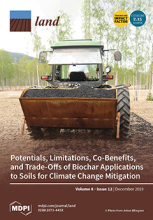/ library resources
Showing items 1 through 9 of 101.Street trees, native plantings, bioswales, and other forms of green infrastructure alleviate urban air and water pollution, diminish flooding vulnerability, support pollinators, and provide other benefits critical to human well-being.
Green infrastructure is a strategically planned network of natural and semi-natural areas, including green and blue spaces and other ecosystems, designed and managed to deliver a wide range of ecosystem services at various scales.
Distinguishing between the ecosystems’ capacity to generate ecosystem services (ES) and the actual use of these service (ES flow) in ES assessment and mapping is important to develop an understanding of the sustainability of ES use.
Sustainable land management is essential to meeting the global challenge of securing soil and water resources that can support an ever increasing population.
Cities often don’t appreciate the benefits of green infrastructure (GI) enough.
Nature-based solutions (NBS) is the latest contribution to the green concept family. NBS is defined as actions based in nature addressing societal challenges.
The concept of a nature-based solution (NBS) has been developed in order to operationalize an ecosystem services approach within spatial planning policies and practices, to fully integrate the ecological dimension, and, at the same time, to address current societal challenges in cities.
The character of Amman, Jordan, as the "City of Waters"—referring to the abundance of water flowing in its known stream—has faded away because of the municipal policy to cover the stream in the 1960s which gradually changed the ecological character.
Climate change affects poor and marginalized communities first and hardest.
Paginação
Land Library Search
Through our robust search engine, you can search for any item of the over 73,000 highly curated resources in the Land Library.
If you would like to find an overview of what is possible, feel free to peruse the Search Guide.





